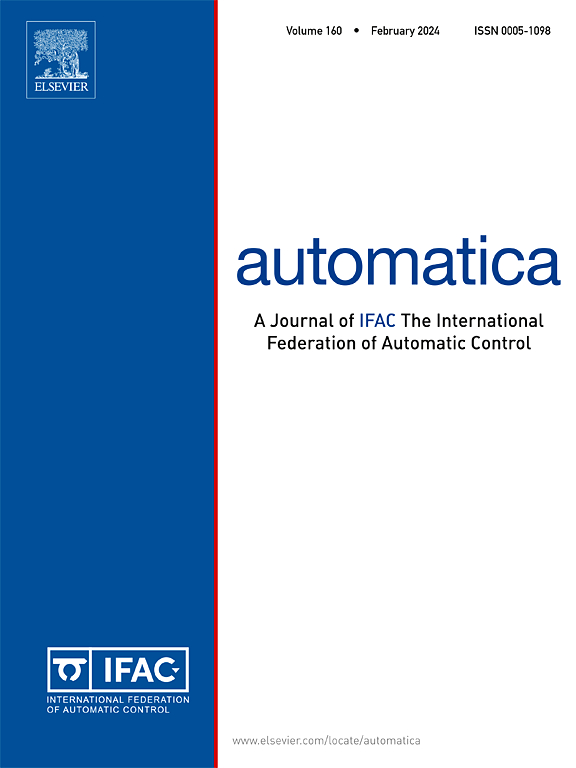欧几里德空间中主动跟踪-回避对集合部分跟踪的出现
IF 5.9
2区 计算机科学
Q1 AUTOMATION & CONTROL SYSTEMS
引用次数: 0
摘要
研究了主动跟踪-逃避对系统中部分跟踪的产生。部分跟踪是指整体集成的某些适当子集实现渐近跟踪,而其余的对不实现渐近跟踪的现象。在以往的文献中,研究了被动跟踪-规避对集的跟踪问题。对于主动逃避者的动力学建模,我们使用排斥力模型来模拟跟踪者的回避。我们提出了一个充分的框架,定性和定量部分跟踪使用能量方法。我们还提供了几个数值模拟,并与分析结果进行了比较。本文章由计算机程序翻译,如有差异,请以英文原文为准。
Emergence of partial tracking in the set of active pursuer–evader pairs in Euclidean space
We study the emergence of partial tracking in the ensemble of active pursuer–evader pairs. Partial tracking represents a phenomenon in which some proper subset of the whole ensemble achieves asymptotic tracking, whereas the rest of pairs does not achieve asymptotic tracking. In previous literature, tracking problem has been studied for the set of passive pursuer–evader pairs. For the dynamic modeling of active evaders, we use a repulsion force modeling the avoidance of pursuers. We present a sufficient framework for qualitative and quantitative partial tracking using energy methods. We also provide several numerical simulations and compare them with analytical results.
求助全文
通过发布文献求助,成功后即可免费获取论文全文。
去求助
来源期刊

Automatica
工程技术-工程:电子与电气
CiteScore
10.70
自引率
7.80%
发文量
617
审稿时长
5 months
期刊介绍:
Automatica is a leading archival publication in the field of systems and control. The field encompasses today a broad set of areas and topics, and is thriving not only within itself but also in terms of its impact on other fields, such as communications, computers, biology, energy and economics. Since its inception in 1963, Automatica has kept abreast with the evolution of the field over the years, and has emerged as a leading publication driving the trends in the field.
After being founded in 1963, Automatica became a journal of the International Federation of Automatic Control (IFAC) in 1969. It features a characteristic blend of theoretical and applied papers of archival, lasting value, reporting cutting edge research results by authors across the globe. It features articles in distinct categories, including regular, brief and survey papers, technical communiqués, correspondence items, as well as reviews on published books of interest to the readership. It occasionally publishes special issues on emerging new topics or established mature topics of interest to a broad audience.
Automatica solicits original high-quality contributions in all the categories listed above, and in all areas of systems and control interpreted in a broad sense and evolving constantly. They may be submitted directly to a subject editor or to the Editor-in-Chief if not sure about the subject area. Editorial procedures in place assure careful, fair, and prompt handling of all submitted articles. Accepted papers appear in the journal in the shortest time feasible given production time constraints.
 求助内容:
求助内容: 应助结果提醒方式:
应助结果提醒方式:


